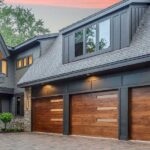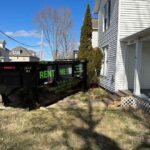If you’ve ever found yourself staring at a patchy, brown backyard and wondering if there’s a better way, you’re in the right place.
I’m going to walk you through transforming your outdoor space with artificial grass. it’s not just about skipping the mowing anymore. today’s fake grass looks incredibly real while saving water, time, and so much hassle.
i’ve seen hundreds of yards go from sad and unused to becoming the family’s favorite spot after switching to artificial grass.
Whether you’ve got kids who need play space, pets who tear up real grass, or you just hate yard work, artificial turf might be your answer.
let’s look at nine super practical tips to make your backyard amazing with artificial grass.
You can check out how this type of landscape upgrade is changing modern yards by exploring fake grass Valencia for some real-life inspiration.
9 Tips To Transform Backyards With Artificial Grass
Before diving into all the details, here’s a quick look at what we’ll cover: planning your layout, picking the right type of grass, proper ground prep work, weed prevention, creating beautiful borders, adding fun features, mixing in natural elements, making it pet-friendly, and keeping it looking great for years.
These nine areas make the difference between an okay installation and a yard that makes neighbors stop and stare.
Plan Your Backyard Layout
Start by really thinking about how you use your yard. grab a piece of paper and sketch out your space. where do people walk most? where do kids play? where do you like to relax?
Measure your yard carefully. those measurements will determine how much grass you need and help you budget properly. don’t just guess – actual measurements save money and headaches.
try using a garden hose to outline different areas before committing. lay it out in curves or straight lines to see what looks best.
Walk through the space and make sure pathways make sense. think about sunny and shady spots too – artificial grass won’t die in shade like real grass, but shade patterns affect how your yard feels throughout the day.
mark spots where you might want to keep some natural elements like trees or garden beds.
Artificial grass works great as the main feature while leaving room for some real plants around the edges.
Choose the Right Artificial Grass Type
not all fake grass is created equal. there are tons of options out there, and picking the right one makes a huge difference in how happy you’ll be.
the main types you’ll see are:
- polyethylene grass – soft, natural-looking, and great for most family yards
- nylon grass – super tough but stiffer, good for high-traffic areas
- polypropylene grass – cheaper but less durable, better for display than regular use
when shopping, ask for samples and feel them with your hands. walk on them barefoot if possible.
Look at the “face weight” – that’s how much the grass fibers weigh. heavier is usually better quality.
Check blade height too. shorter grass (around 1-1.5 inches) looks more like a freshly mowed lawn, while taller options (1.75-2 inches) give a lush, slightly wilder look.
also pay attention to color. real grass isn’t one solid green color. good artificial grass mixes different shades and includes some brown “thatch” at the base to look natural.
Cheap grass with one flat color screams “fake” from a mile away.
for families with kids, softer grass with more cushion makes falls much less painful. for dogs, look for options with better drainage and antimicrobial treatments.
Prep the Ground Properly
this step isn’t glamorous but skipping it ruins everything. proper ground prep is like the foundation of a house – get it wrong and nothing else matters.
first, remove all existing grass and weeds. dig down about 3-4 inches to create room for your base materials.
This seems like a lot of work (it is), but it’s worth it for drainage and stability.
next, add a layer of crushed stone or gravel as your base. this helps water drain away instead of pooling under your grass.
Spread it evenly and use a plate compactor to make it solid. the ground should be firm but not completely hard as concrete.
make sure you create a slight slope away from your house – about a 1-2% grade is perfect. this prevents water from flowing toward your foundation during heavy rain.
fill in any low spots. check for level areas by laying a long board across the surface and looking for gaps underneath. Take your time here – rushing through prep work always leads to problems later.
Install an Effective Weed Barrier
weeds are sneaky. they’ll find ways to grow through almost anything, including your beautiful new artificial grass. a good weed barrier is super important.
after your base is ready, roll out weed barrier fabric across the entire area.
This special fabric blocks weeds while letting water drain through. make sure to overlap the seams by at least 4 inches so weeds can’t find gaps.
secure the edges with landscape staples or pins every few feet. pay extra attention to the perimeter – that’s where most weeds try to sneak in.
some pros recommend using both a pre-emergent weed killer on the soil before adding your base layer, then adding the weed fabric for double protection.
Belt and suspenders approach, but it works!
remember that no weed barrier is 100% perfect forever.
You might still need to pull the occasional stubborn weed that finds a way through, but a good barrier reduces this to almost nothing.
Enhance the Look With Borders and Edging
borders make everything look finished and professional.
They create clean lines between your grass and other areas like gardens or patios.
popular edging materials include:
- brick pavers for classic looks
- metal edging for modern, clean lines
- stone for natural vibes
- plastic edging for budget-friendly options
install your edging slightly below the height of the grass so mower blades or trimmers won’t damage it.
Secure it firmly so it won’t shift over time with freezing/thawing cycles.
curved borders often look more natural than straight lines.
They guide the eye around your yard in a pleasing way.
Try laying out your border with rope first to test different curves before installing permanent materials.
consider your home’s style when picking edging. brick works well with traditional homes, while metal complements modern designs. Mixing materials can look messy unless you’re very careful with the design.
Add Functional Backyard Features
Artificial grass creates the perfect backdrop for fun backyard features.
Since you’re already redoing your yard, now’s the time to add things you’ll actually use.
Fire pits are super popular and create a natural gathering spot.
Just make sure to use a protective barrier between any heat source and the artificial grass since the fibers can melt.
built-in seating gives people places to relax without dragging chairs around. consider a mix of sunny and shaded options for different times of day.
For families with kids, think about incorporating play areas.
Artificial grass provides great cushioning under swing sets or play equipment. some people even add putting greens or bocce ball courts.
Water features like small fountains add pleasant background sounds that mask neighborhood noise. they also attract birds and butterflies that bring life to your yard.
Whatever features you choose, make sure they match how you actually use your space.
Don’t add a huge dining area if you rarely eat outside, or a firepit if you live somewhere too hot to use it most of the year.
Incorporate Natural Elements
All artificial grass and no natural elements can make a yard feel fake or sterile. mixing in some living plants creates a balanced space that feels right.
create planting beds around the edges of your artificial grass.
These can be filled with low-maintenance shrubs, flowers, or ornamental grasses. native plants that don’t need much water complement the water-saving benefits of artificial grass.
potted plants work great too. they add height and can be moved around as needed.
large containers with small trees or tall plants create privacy and shade.
Consider adding a small vegetable or herb garden in raised beds.
Growing food connects you with natural cycles even if your main lawn is maintenance-free.
Rock gardens or dry creek beds add texture and visual interest while sticking with the low-maintenance theme.
They can also help with drainage in areas where water tends to collect.
Trees provide necessary shade that keeps artificial grass cooler in summer.
Just be aware that some trees drop a lot of leaves or sap that might require more cleaning.
Consider Pet-Friendly Improvements
Pets and artificial grass can be best friends or worst enemies depending on how you set things up. A few smart additions make all the difference.
First, choose artificial grass specifically marketed for pets.
These products have better drainage and antimicrobial treatments built in.
They’re designed to let liquid waste drain quickly without trapping odors.
Create a designated bathroom zone with special infill materials that help control odors.
Some people add a small area of real mulch or pea gravel that dogs naturally prefer.
Install a simple irrigation system to rinse down areas where pets regularly do their business.
Some systems can be connected to your hose with a timer for automatic rinsing.
Make sure the edges of your artificial grass are secured well so dogs who like to dig won’t be able to pull it up. Buried bendable edging works well for this.
Add some shade options since artificial grass can get hot in direct sun.
Dogs especially need cool spots to rest during summer days.
Maintain Your Artificial Grass the Right Way
Artificial grass isn’t totally maintenance-free, but it’s pretty close. regular light maintenance keeps
It looking great for many years.
Rinse it occasionally with water to remove dust and small debris.
A gentle rain does this naturally, but during dry spells, a quick spray with the hose helps.
Remove leaves, twigs and debris with a leaf blower on a low setting or a flexible rake made for artificial turf.
Don’t use regular garden rakes which can damage the fibers.
For pet owners, solid waste should be picked up promptly just like on real grass.
Rinse areas where pets urinate with water and occasionally use an enzymatic cleaner made for artificial turf.
Brush the grass fibers every few months to keep them standing up properly.
Use a stiff broom or brush with synthetic bristles and brush against the natural lean of the fibers.
Fix any seams that start to show over time. small repair kits are available, or you can call your installer for bigger issues.
Addressing small problems quickly prevents them from getting worse.
Conclusion
Artificial grass has come a long way from the plastic-looking stuff of the past.
Today’s options can transform a problem backyard into your favorite outdoor space.
With proper planning, preparation, and installation, you’ll create a yard that looks amazing all year with minimal upkeep.
Think about how you’ll use the space, choose quality materials, and take your time with the installation process.
Add your own personal touches with borders, functional features, and some natural elements to soften the look.
The best part? trading your lawnmower and weekend yard work for more time actually enjoying your backyard.
That first barbecue or kids’ birthday party on your new artificial grass will make all the effort worthwhile.
Your yard should make you happy, not stressed out about maintenance. artificial grass might be just the solution you’ve been looking for.



